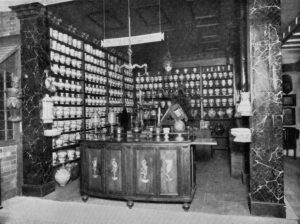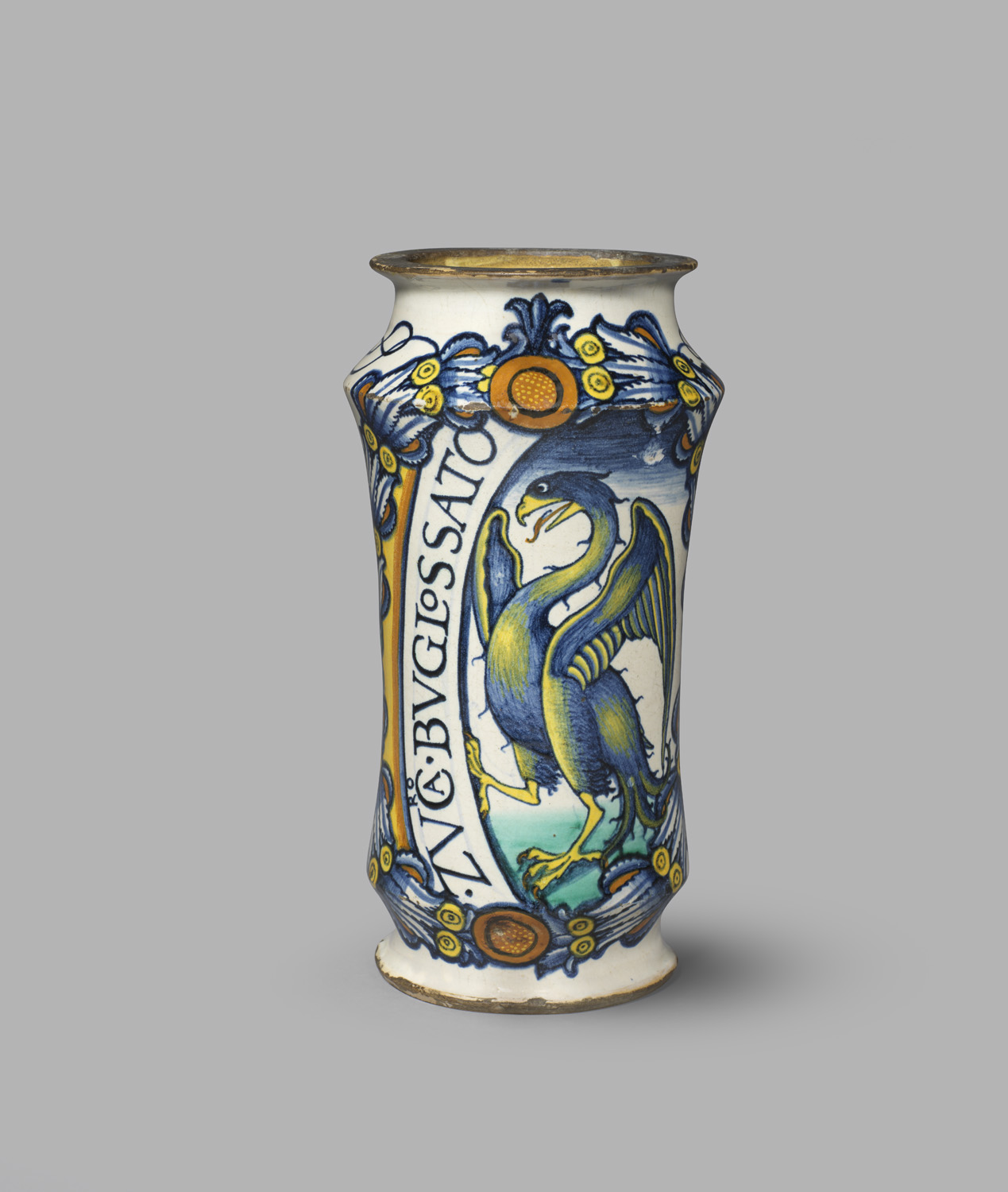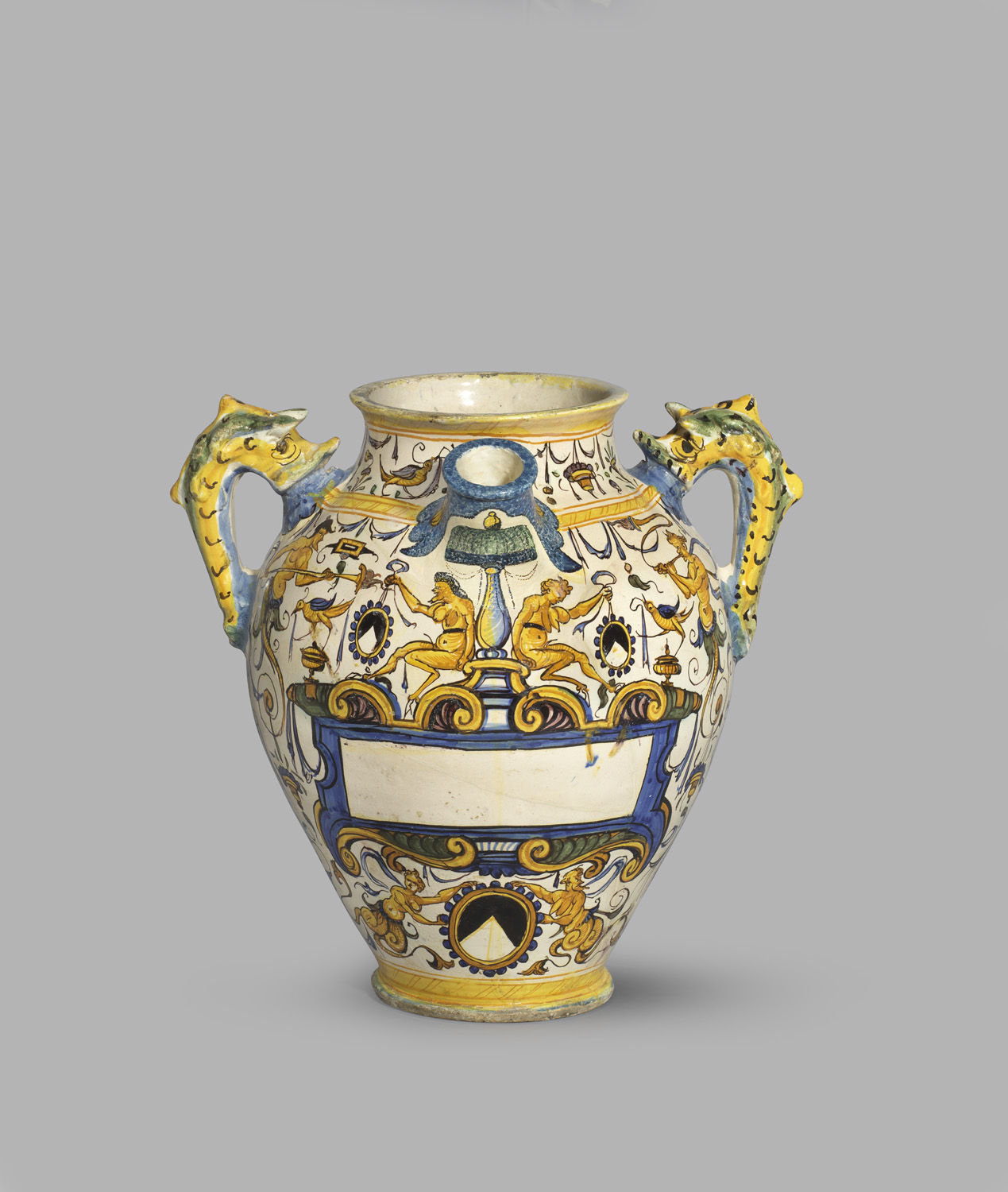Tin-glazed pottery, known as maiolica, forms a quintessential aspect of Italian Renaissance art. Maiolica became fashionable in the fourteenth century and evolved into a medium with a great variety of uses and decoration. Interestingly, the study of maiolica also allows us to probe into the crafts and social context of that period. Decorated pottery made for public use was associated with, and representative of, brands and communities. One example of where maiolica was used for both practical and emblematical purposes was in the pharmacies, or apothecaries, of the period.

Apothecaries were initially established as spice shops during the Renaissance. As certain spices were applied in remedies, such shops evolved to serve medicinal purposes. In actual pharmacies, practitioners would dispense raw ingredients or preparations based on individualised prescriptions. The personalised remedies aligned with the philosophical approach of understanding health and wellbeing, while “maintaining a balance of substances”. Although in this era the boundaries between alchemy and medicine were still blurred, we can observe an early attempt to standardise medical practice in Renaissance pharmacies. From pharmacies of great monasteries to more commercialised apothecaries, these establishments often commissioned maiolica as storage jars for solid or liquid ingredients. As mentioned before, these jars had practical and aesthetic features which befitted the brand consistency of different pharmacies.
So how can we understand the different features of these intriguing storage jars? Our project chooses one specific jar and aims at interpreting its multiple layers and unlocking its mysteries. First, through a scientific lens, we will look at how it may have foreshadowed early pharmaceutical practice.



